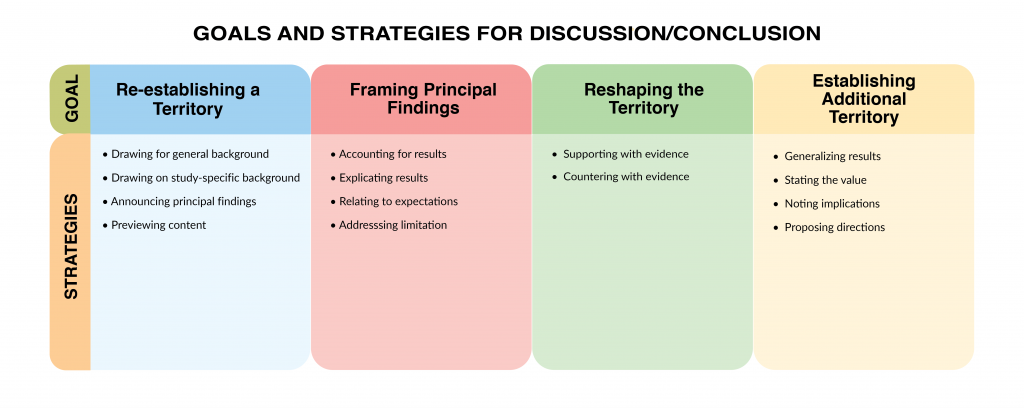Chapter 6: Discussion/Conclusion Section(s)
Chapter 6 Synopsis: Writing the Discussion/Conclusion
In this chapter, we learned how to finalize a research article. The four main goals and their strategies were discussed and exemplified along with some advice about what language you can use. To review, let’s look again at the four goals:
- Re-establish the territory
- Frame the principal findings
- Reshape the territory
- Establish additional territory
Through these goals, writers provide readers with extended analyses and interpretations of the results by evaluating their implications and situating them within the existing literature. While the two specific middle sections of a research paper focus mainly on what’s happening inside the research project, the Discussion/Conclusion section tends to expand the meaning beyond or outside of the research at hand. In other words, writers must indicate how the results add or relate to existing knowledge within the discipline, which points out the value of the work. The final section of the manuscript is also the last aspect of your work that your readers will examine, so it must convincingly finalize the scientific argument that has been unfolding through each section.
According to the Phrasebank website, Discussions/Conclusions usually carry the following functions:
- To review and compile ideas and arguments, which may include a kind of retrospective view of the main areas covered in the writing;
- To evaluate the research overall, which could also involve recommending improvements and considering coming trends.
 Key Takeaways
Key Takeaways
 Explore + Apply
Explore + Apply
Before you begin applying what you’ve learned in this chapter to your Discussion/Conclusion section, explore published writing in your discipline or in a target journal that you’ve identified. Look for the goals and strategies presented here to see where you might find similarities and differences that are discipline- or journal-specific. Next, try outlining your next Discussion/Conclusion section using the structuring and placement of those goals and strategies as a model.


